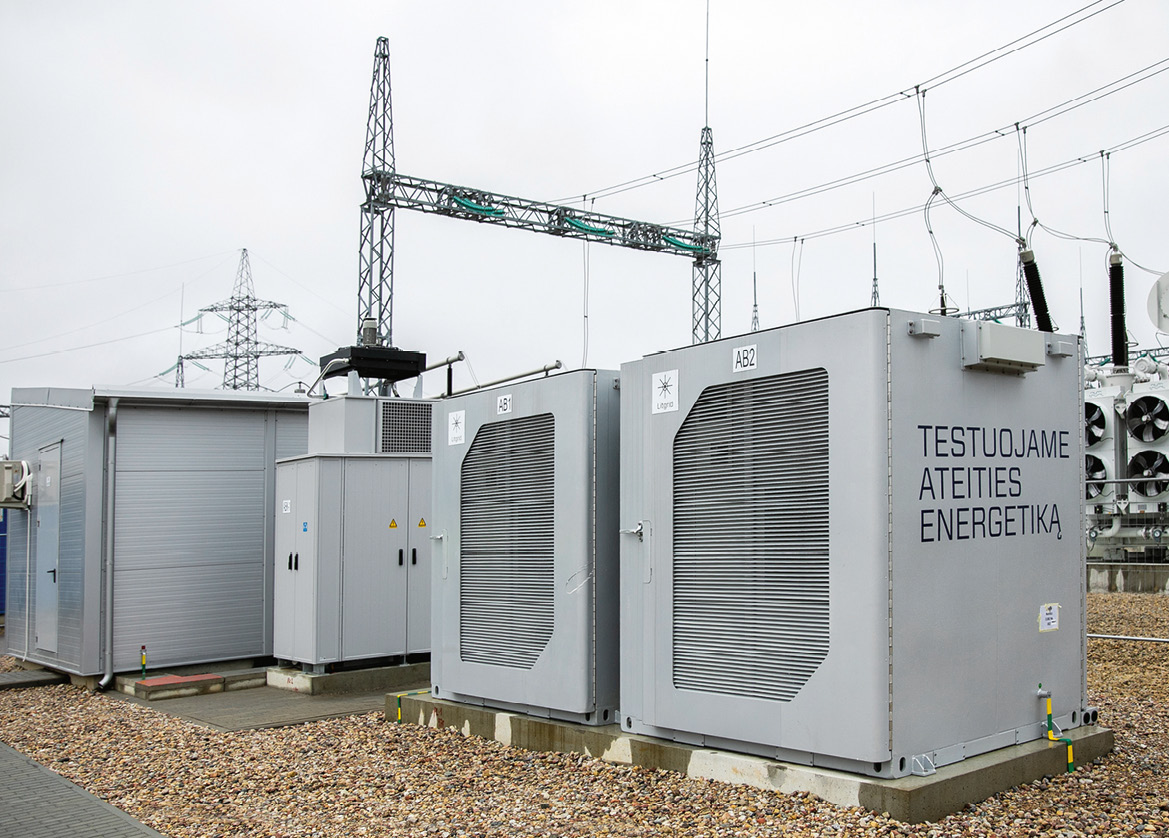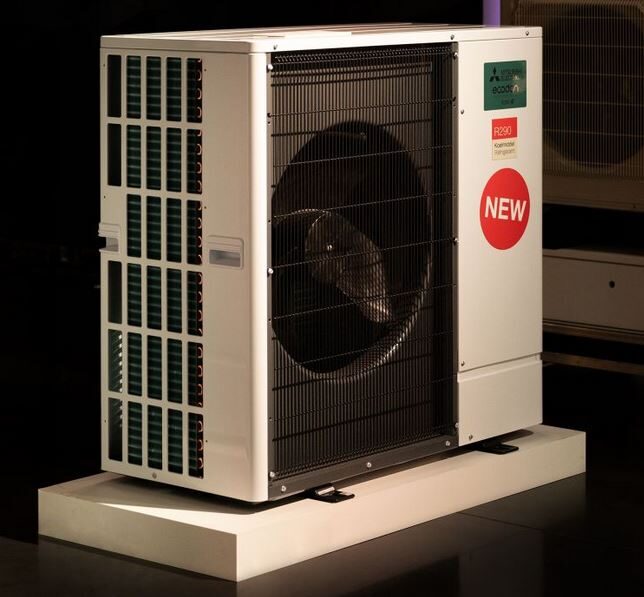From pv magazine 08/2022
It’s the little battery that could. In Vilnius, the capital city of the Baltic state of Lithuania, a 1 MW/1 MWh lithium-ion battery has been changing perceptions of the role of battery energy storage systems on electricity networks. And with solar and wind penetration growing fast in many parts of the world, grid-scale batteries can play an essential part in utilizing transmission and distribution networks to their fullest and allowing renewables to flow across national borders.
The 1 MW battery in Vilnius has the name Litgrid Innovation platform, conceptualized in November 2019 and completed in December 2021. Of significance in Europe, it is owned and operated by a Transmission Network Operator (TSO), the publicly owned Litgrid. And while small for a grid-scale battery, it was prompted by bigger geo-political forces, and is likely to have an outsized impact on energy storage in the Baltic region and beyond.
As a hangover from the Cold War period, Lithuania has been a part of the Russia/Belarusian synchronous electricity area. The decision was made in 2018 for the country, in cooperation with the European Union, and in concert with neighbors Finland, Latvia, Sweden, and Poland, to join the continental European synchronous area.
Making such integration a reality is no straightforward undertaking, and when Litgrid engineers drew up a list of the requirements for the European integration it ran to more than 300 items. One of which was the application of battery storage to support the country’s electricity network.
“When two synchronous areas connect and operate in synchronous mode, from time to time the synchronous interface might be lost, because it is an overhead line and there might be a tree fall, lightning might hit, or a bird can strike, and at that moment the one synchronous area might split into two,” says Liutauras Varanavicius, the director of Litgrid’s strategy department. “At that moment the ‘Free Baltic states’ would operate in an isolated role, that mode technically and economically is a dramatic mode for us – it is temporary, most probably it might last hours but it also might take days or weeks. And the system must remain stable, reliable, and as efficient and optimized under those circumstances.”

Battery capabilities
Battery energy storage systems’ ability to react to grid events quickly made their application well suited to the needs of the Lithuanian grid operators in the European integration project. If a disturbance to the interconnection between countries in a synchronous area was to occur, a battery would be able to rapidly charge or discharge, to maintain the frequency on the temporarily isolated grid, ensuring the stable provision of electricity.
There were alternatives to batteries considered by the Litgrid engineers. These include the utilization of high-voltage direct current (HVDC) transmission or the implementation of demand response – whereby electricity consumers are incentivized to reduce consumption for a period. Varanavicius notes that this latter mechanism is not yet in place in Lithuania, although the concept has been approved by regulators, with aggregators and market mechanisms lacking. And while HVDC lines were investigated, it was found that batteries would be more effective as they allow electricity trading between states to continue unaffected.
“My engineers also explained that if we were to do that instead of batteries we would need to, proactively in advance, take down capacity from the traded market,” says Varanavicius. “So, this is less effective because you would limit the exchange of electricity, which is socio-economically beneficial where there are lower wholesale prices.”
Litgrid tested 11 functions on the 1 MW Innovation platform project, with one decisive outcome that proof of the rapid reaction capability was verified. The grid operator’s engineers found that the battery could switch from -1 MW to +1 MW in only 157 milliseconds. “This was exactly why we were interested in batteries from the very beginning.”
200 MW stage 2
Given this successful proof-of-concept, four 50 MW grid-scale battery projects are being installed on the Lithuanian electricity network by Energy Cells which, along with Litgrid, is a part of the EPSO-G group. The batteries are currently being installed at four substations in Vilnius, Alytus, Utena, and Šiauliai, with completion scheduled for the end of 2022.
The batteries comprising the 200 MW multi-site project are somewhat limited, as they will only provide “fast and flexible emergency power reserve.” Under EU regulations, TSOs are not permitted to own battery assets that participate in energy markets through frequency regulation markets or energy arbitrage trading – which applies in this case due to Energy Cells’ ownership.
The regulatory limitation of TSO-owned batteries in the EU appears likely to promote the emergence of a new business model, whereby TSOs will contract with third parties that own grid-scale battery assets for the provision of synthetic inertia, frequency regulation or other services. Such an ownership structure would allow the batteries to “stack” revenue from various sources, enhancing their competitiveness.
“A battery can only be owned by TSO [in the EU] if it’s the only fully integrated network component,” says Lars Stephan, policy and market development manager at Fluence. “Then if it’s third party owned you can stack more revenues. But on the other side, I think they [TSOs] need to gain more experience in how they can trust a third-party counterpart to provide a critical service when it is required, how to structure that.” Stephan says that the development of common communication interfaces between the parties will also have to be improved. “It’s still very early,” he says.
Early promise
Despite this decade representing only the dawn of batteries as transmission assets, Fluence sees considerable promise in the application. It currently tracks a “GW scale” pipeline of projects in the EMEA region in what it terms the “transmission segment,” with TSOs tendering for battery projects in the support of transmission infrastructure, although the specific ownership structure of some prospective projects is as yet unclear.
There are also a number of notable transmission segment battery projects in Europe. For example, in France, the 32 MW / 98 MWh Project RINGO on the RTE network is looking to bolster transmission in congested parts of the grid. And Germany’s 1,300 MW “GridBooster” project, which was proposed in 2019, is currently seeing the first 450 MW of batteries approved on the TransnetBW and TenneT networks.
Further afield, countries with “long and skinny” electricity networks and increasing renewable penetration, such as Chile and Australia, are particularly well suited to batteries as transmission assetsm, with projects already underway. Notably, in July the 150 MW / 193.5 MWh Hornsdale Power Reserve, supplied by Tesla and operated by Neoen, was approved by market regulators to provide 2,000 MW of equivalent inertia, or around 15% of the predicted shortfall in the state of South Australia’s electricity network.
Long-distance transmission
The use-cases being demonstrated in these projects illustrate how batteries can allow existing grid infrastructure to be utilized more effectively in the event of a renewable penetration increase, the retirement of fossil-fuel generators, or unique situations such as that posed in the Baltics. Yet it is in the support of long-distance transmission lines that the concept of “virtual transmission” may be most impactful.
“The longer the virtual transmission line the more competitive the batteries are likely to be,” says George Hilton, a senior analyst focusing on energy storage at IHS Markit. “This is because it would be more costly to do traditional infrastructure upgrades across that distance.”
Hilton cites the proposed 3,800-kilometre-long “Xlinks Morocco-UK Power Project” which would see a sub-sea HVDC interconnector between the countries as being an example of batteries potentially bolstering long-distance transmission. By adding batteries either side of such a transmission link, “you can then transmit the power over that distance without hitting the thermal limits of those cables, voltage limits, and affecting fault issues along those power lines,” says Hilton.
However, there is little in the way of real-world demonstration of batteries playing such a role and Hilton envisages there being challenges in their operation in this way. “You have to manage the state of charge of both of those batteries together and clearly you have limits to that because of the limits of the state of charge of the batteries either side. Those are things that haven’t been tested in the real world. You can model it, but projects installed and operated in this way haven’t been fully tested,” he says.
Prices up
Given the vast price tags of such ambitious interconnection projects, the cost of the batteries in such applications is less critical; however the rising cost of batteries is likely to dampen some transmission segment battery applications. With surging demand from the automotive sector and supply chains stretched, prices have increased by some 30%. Litgrid’s Varanavicius dryly observes that the 200 MW second phase in Lithiuania was procured before the price hikes occurred. He says that the company’s 1 MW innovation project will continue to prove its worth after its initial demonstration phase.
“Like public telescopes, which are available to scholars for free use for their work, we announced that societies, businesses, and academics, not only in Lithuania but further afield, can use the 1 MW battery for future R&D studies,” says Varanavicius. The first co-operations of this nature were announced by Litgrid in early August. “This asset is not stranded, and it still delivers on increasing competences of batteries among certain societies.”
Litgrid Innovation platform gong

The 1 MW/1 MWh project in Vilnius picked up The smarter E award in the Outstanding Projects’ category in 2022. The award jury noted that installing such battery projects would enable “greater energy independence and decarbonization for Lithuania and other regions.” Additionally, the jurors noted that the project demonstrated the “pioneering idea of expanding grid capacity with batteries, which will gain even more traction as the proportion of renewable energies increases.” Representatives from Litgrid and Fluence which, along with Siemens executed the project, attended the award ceremony on May 10.
This content is protected by copyright and may not be reused. If you want to cooperate with us and would like to reuse some of our content, please contact: editors@pv-magazine.com.




1 comment
By submitting this form you agree to pv magazine using your data for the purposes of publishing your comment.
Your personal data will only be disclosed or otherwise transmitted to third parties for the purposes of spam filtering or if this is necessary for technical maintenance of the website. Any other transfer to third parties will not take place unless this is justified on the basis of applicable data protection regulations or if pv magazine is legally obliged to do so.
You may revoke this consent at any time with effect for the future, in which case your personal data will be deleted immediately. Otherwise, your data will be deleted if pv magazine has processed your request or the purpose of data storage is fulfilled.
Further information on data privacy can be found in our Data Protection Policy.